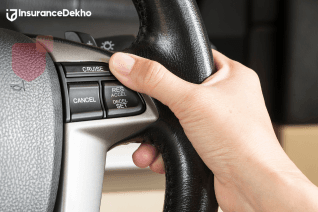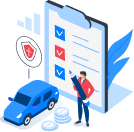What is Hydroplaning? Causes, Dangers, and How to Stay Safe
In 2022, India reported 4,61,312 road accidents, leading to 1,68,491 deaths and over 4,43,000 injuries. Among many causes, one major risk during the monsoon season is hydroplaning, a dangerous phenomenon where vehicles lose contact with the road due to water buildup. Let’s understand hydroplaning better, its causes, dangers, and how you can stay safe.
Key Highlights
-
Hydroplaning: Loss of control due to water buildup between tyres and the road.
-
Causes: High speed, worn tyres, poor roads, and water depth.
-
Dangers: Skidding, loss of control, and serious accidents.
-
Prevention: Slow down, maintain tyres, avoid sudden moves.
-
If Hydroplaning: Ease off accelerator, steer gently, stay calm.
What is Hydroplaning?
Hydroplaning happens when a layer of water builds up between your vehicle’s tyres and the road, leading to a complete loss of grip. As a result, your tires can't properly touch the road surface, making it very difficult, sometimes impossible, to steer, brake, or accelerate safely.
Why Does Hydroplaning Happen?
Several factors can cause hydroplaning, especially during heavy rains or on wet roads:
1. High Vehicle Speed: Driving too fast doesn't allow your tires enough time to push water away, causing them to ride on top of the water.
2. Poor Tyre Condition: Worn-out tyres with shallow tread depth cannot channel water away effectively, increasing the risk of hydroplaning.
3. Road Surface Conditions: Uneven or poorly maintained roads make it harder for tyres to maintain contact with the surface.
4. Water Depth on Roads: Even a thin layer of water can cause hydroplaning if you're moving too fast. The deeper the water, the greater the risk.
How Dangerous is Hydroplaning?
Hydroplaning can turn a simple drive into a serious accident in seconds. Some key dangers include:
-
Loss of Control: As your tires lose grip, steering becomes unpredictable, increasing the risk of collisions with other vehicles, pedestrians, or roadside objects
-
Severe Accidents: Uncontrolled skidding can lead to major crashes, injuries, and even fatalities.
How to Recognise When You're Hydroplaning
You might be hydroplaning if:
-
The steering feels light or unresponsive.
-
Your car starts sliding sideways or feels like it's floating.
-
The engine sound suddenly gets louder as tyres spin faster.
Recognising these signs early can help you react calmly and safely.
Factors That Make Hydroplaning Worse
Some vehicles and driving habits are more prone to hydroplaning:
-
Vehicle Type: Cars with a higher centre of gravity or lighter weight may hydroplane more easily.
-
Driver Behaviour: Aggressive steering, hard braking, and speeding on wet roads increase your risk.
What to Do If You Start Hydroplaning
If your vehicle starts to hydroplane:
-
Ease off the accelerator immediately. Don’t brake suddenly, it can make you lose complete control.
-
Steer gently in the direction you want to go.
-
Stay calm and wait for your tyres to regain grip naturally. Panicking or making sudden moves can worsen the skid.
How to Prevent Hydroplaning
The best way to stay safe is to prevent hydroplaning in the first place. Here’s how:
-
Slow Down on Wet Roads: Reduce your speed by at least 5-10 mph during rain. Slow down further if you see standing water.
-
Maintain Your Tyres: Check tyre pressure and tread depth regularly. A tread depth of at least 2/32 of an inch is critical for safety.
-
Avoid Sudden Moves: Gentle acceleration, steering, and braking can help maintain traction on wet surfaces.
Hydroplaning is a serious risk during the rainy season, but with the right precautions, you can greatly reduce the chances of it happening. Maintaining your vehicle, driving carefully on wet roads, and being aware of the dangers are key to staying safe. Regular servicing, tyre checks, and calm driving habits go a long way in protecting yourself and others on the road.














































